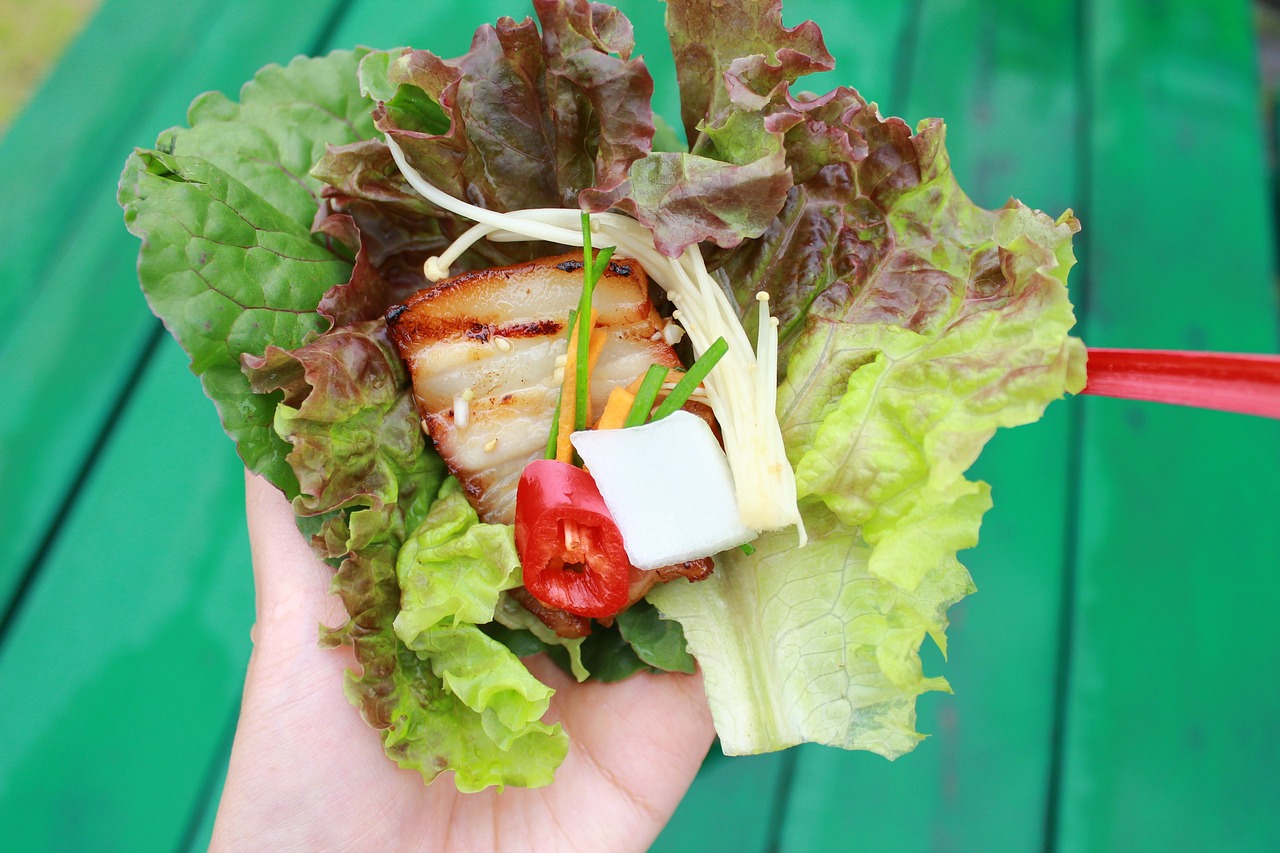The Art of Ssam: Korea's Vegetable Wrap Tradition
Introduction
In our previous discussion on Korean cuisine, we explored the variety of vegetable-based banchan. While there are numerous dishes featuring vegetables, Koreans also enjoy fresh vegetables in a unique way called 'Ssam', a DIY-style wrap.
What is Ssam?
Ssam is a vegetable wrap that can enclose any food according to personal preference. Typically, it consists of:
- A piece of meat
- Bap (rice)
- Ssamjang (a sauce)
- Lettuce or other edible leaves
The key to making ssam is ensuring it's bite-sized.
The Beloved Beefsteak Plant
When discussing ssam vegetables, the beefsteak plant holds a special place in Korean cuisine. This herb, consumed primarily in Korea, complements greasy or spicy foods like grilled meat with its strong flavor and slightly piquant taste.
How to Enjoy Ssam
- Choose your favorite vegetables
- Spread them to cover other ingredients
- Add fillings such as:
- Samgyeopsal (grilled pork belly)
- Garlic
- Chili pepper
- Ssamjang or kimchi
- Optional additions:
- Pickled onions
- Myeong-i herb (garlic leaves)
Bossam: A Special Ssam Dish
Bossam, meaning 'wrapped cloth', is a dish featuring:
- Suyuk (steamed pork)
- Cabbage leaves or kimchi wraps
- Often paired with Makgeolli (Korean rice wine)
Raw Fish Ssam
Koreans also enjoy wrapping raw fish in vegetables. This practice stems from:
- Geographical influences (abundance of firm white fish)
- Cultural preferences for fresh seafood
- The chewy texture of raw fish complementing the wrap
A popular variation is Hoe-deopbap, a raw fish bibimbap with cho-gochujang sauce.
Sauces for Ssam
Korean ssam sauces, collectively called 'jang', are primarily soybean-based:
- Gochujang (Red pepper paste)
- Doenjang (Soybean paste)
- Ganjang (Soy sauce)
Gochujang Variations
- Cho-gochujang: Gochujang mixed with vinegar, ideal for seafood
- Ssamjang: A blend of gochujang and doenjang, perfect for ssam
Conclusion
The ssam tradition, along with banchan and soybean-based sauces, showcases the prominence of vegetables in Korean cuisine. This vegetable-centric approach has contributed to the development of Korean food culture, emphasizing diverse ingredients and textures. The complexity and variety of Korean cuisine continue to captivate food enthusiasts worldwide.


Comments